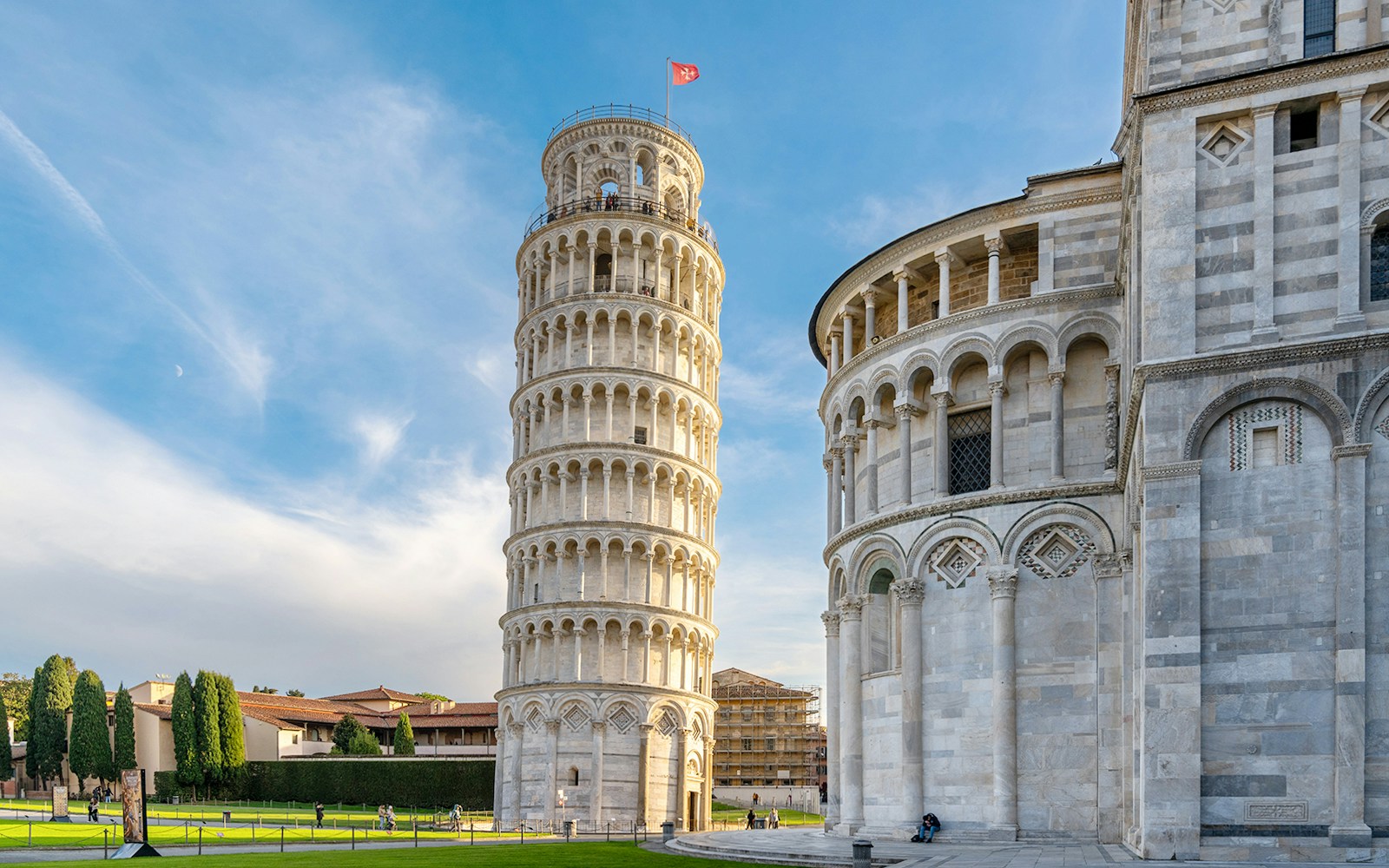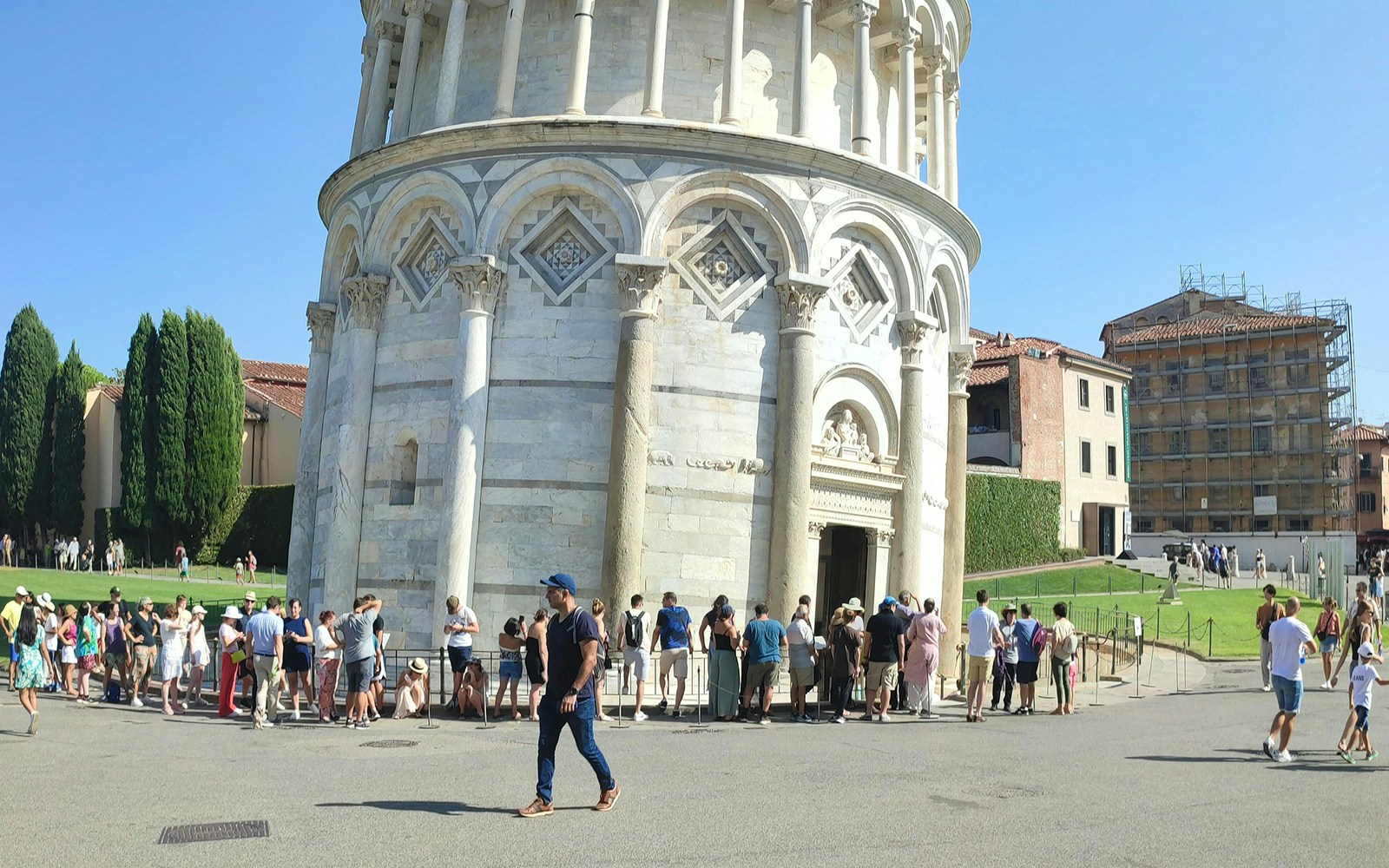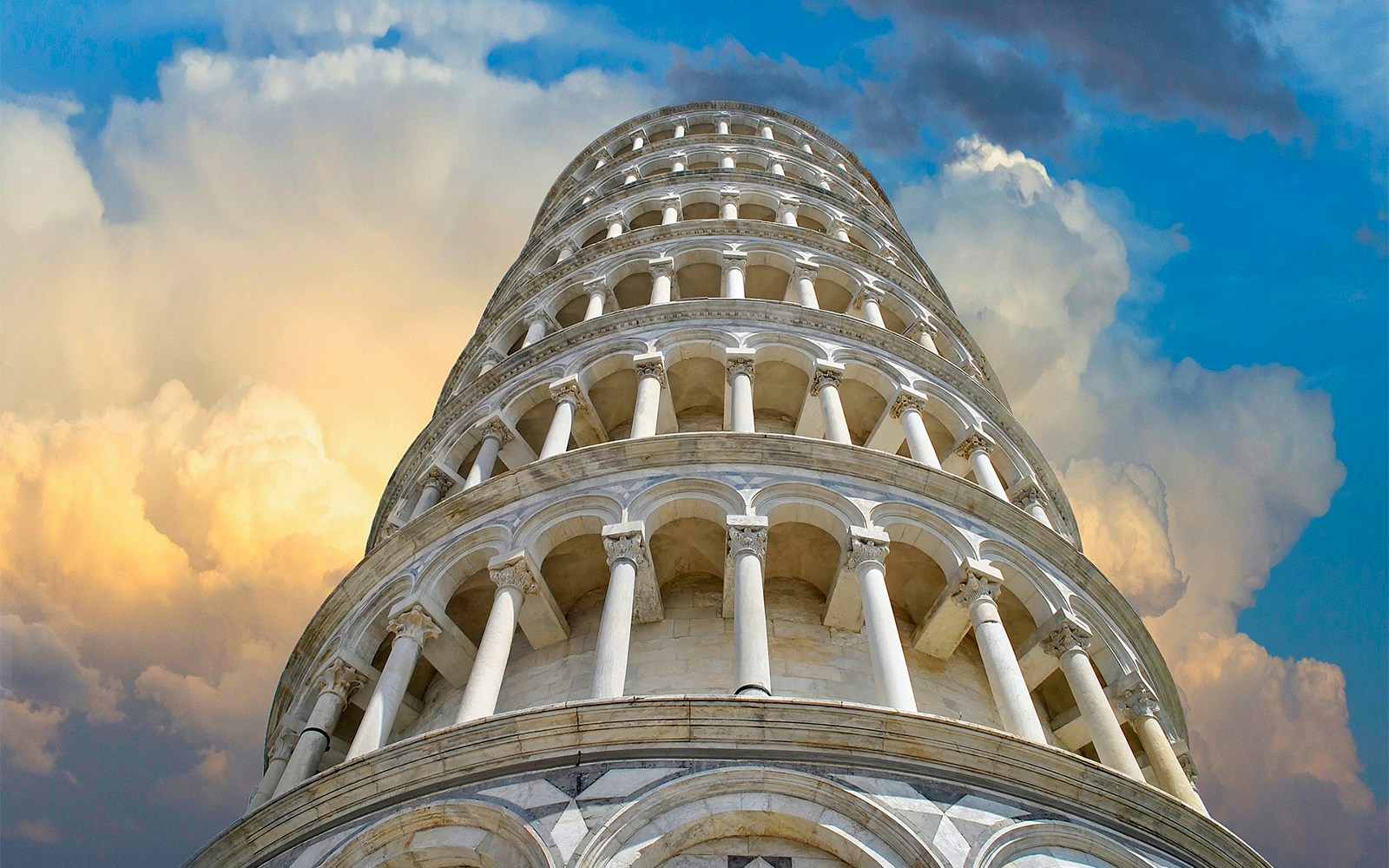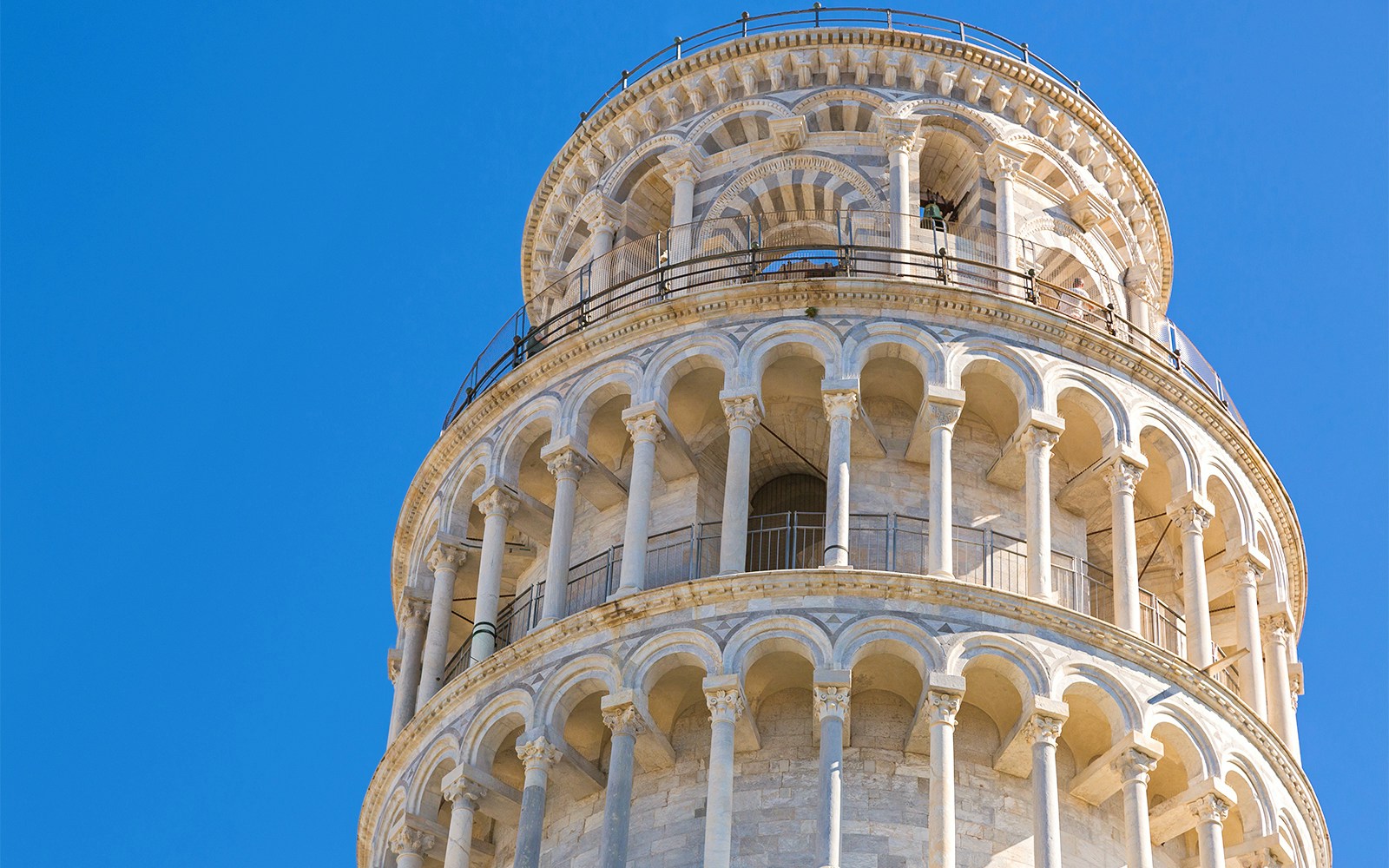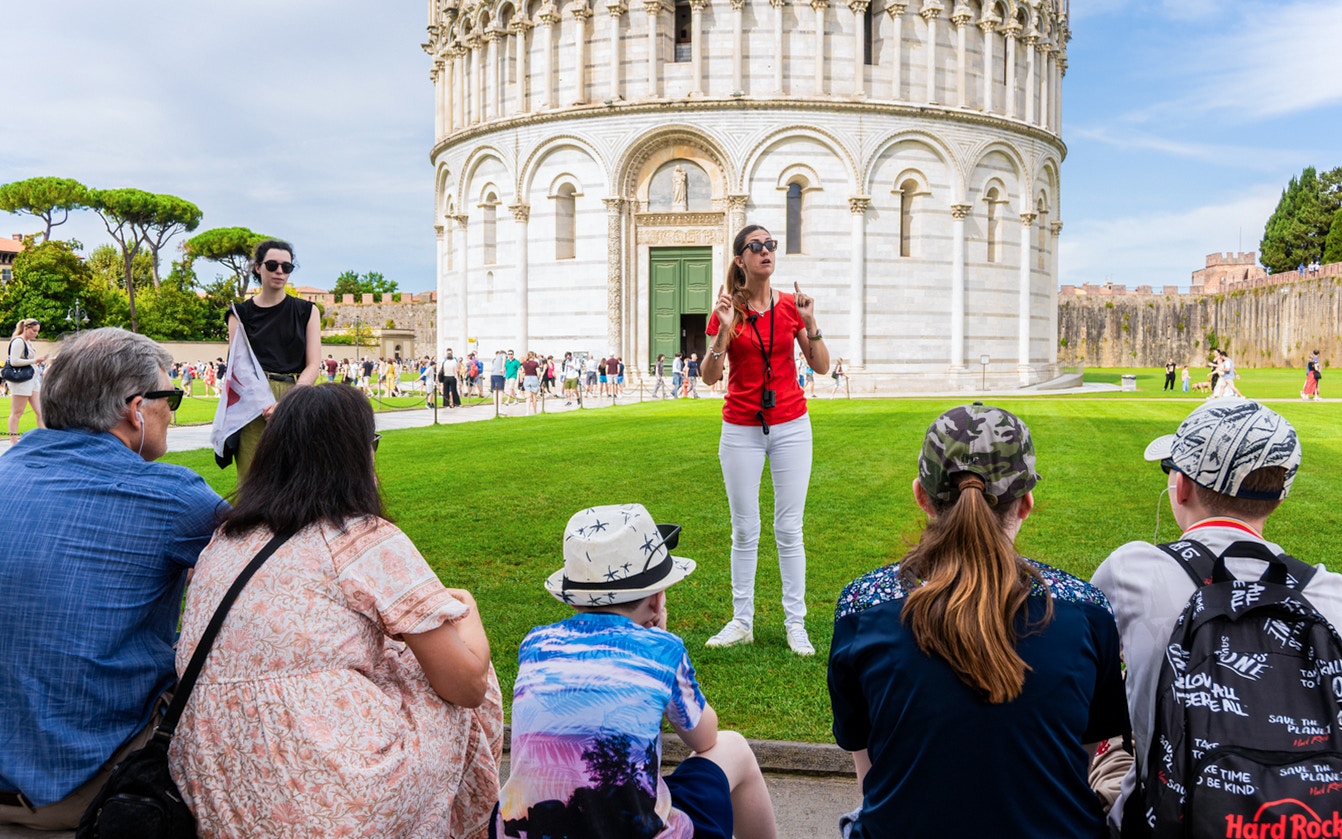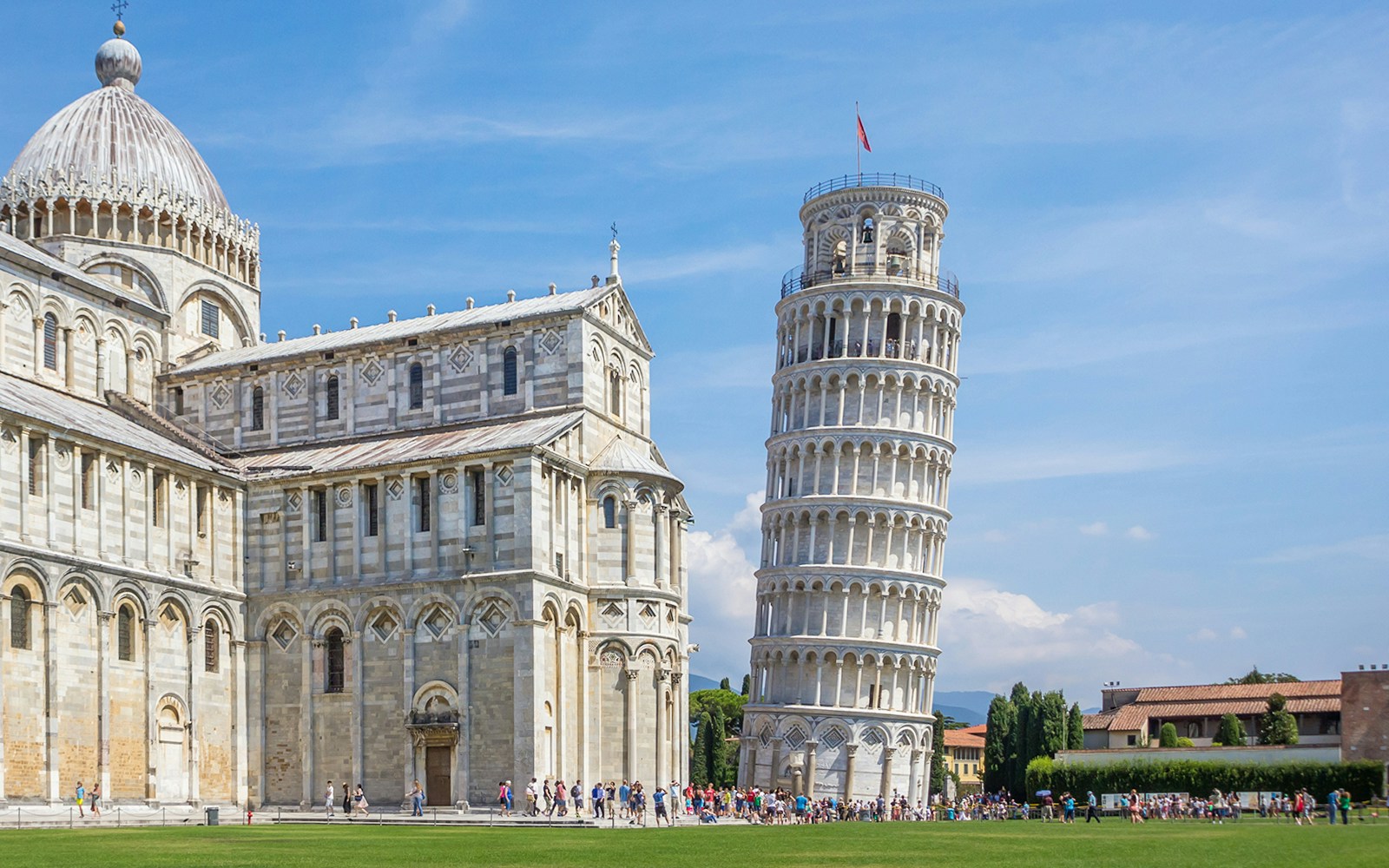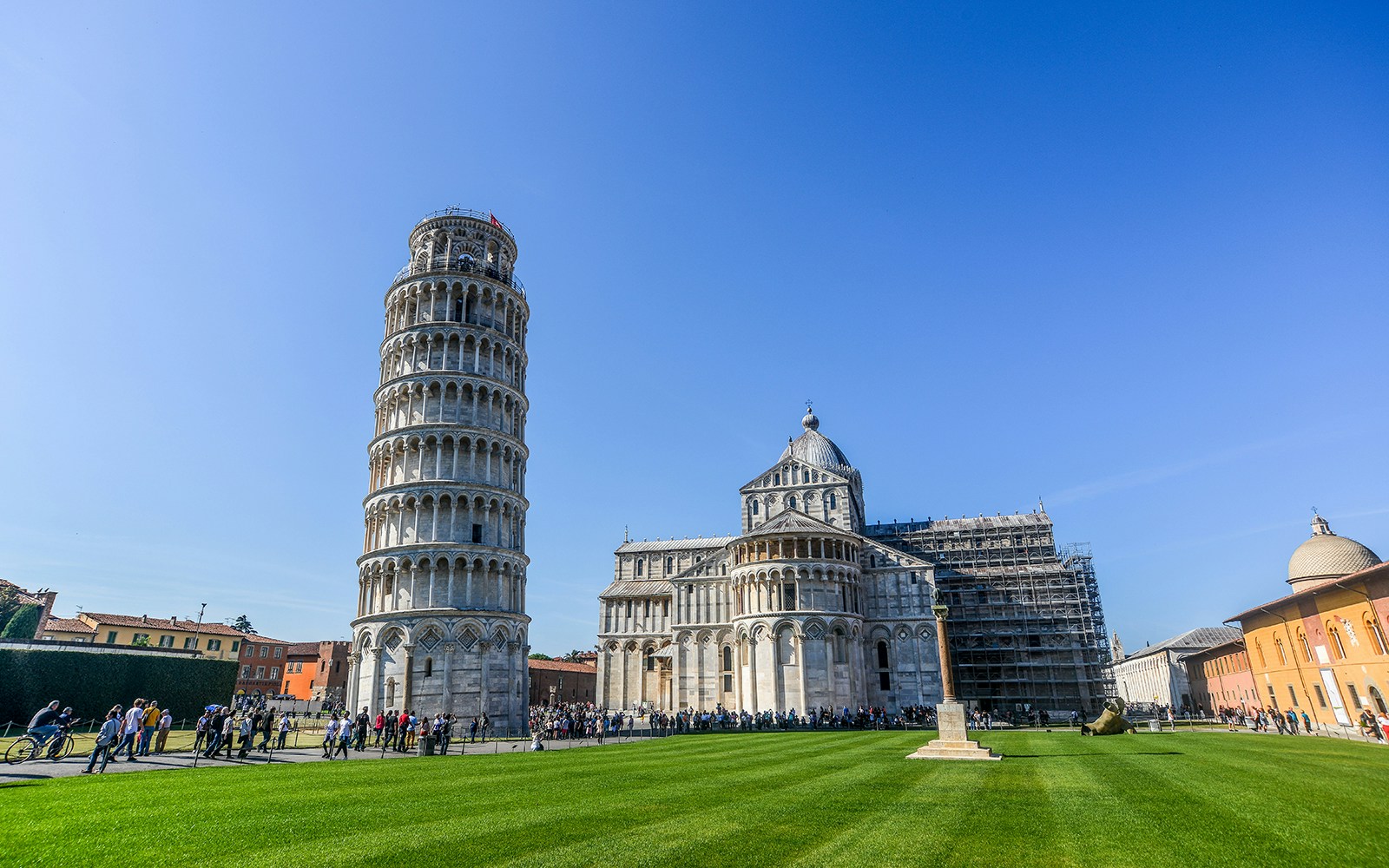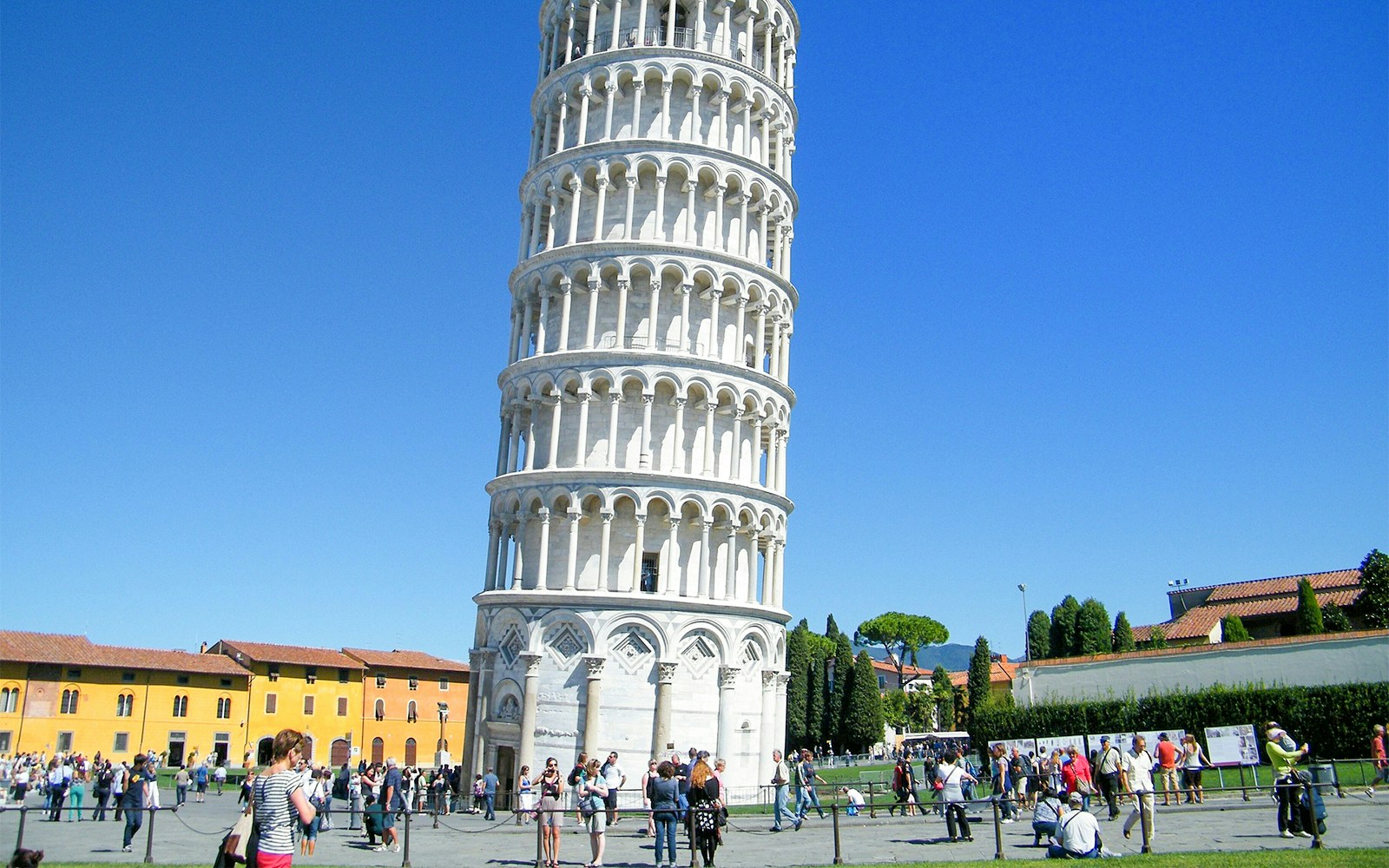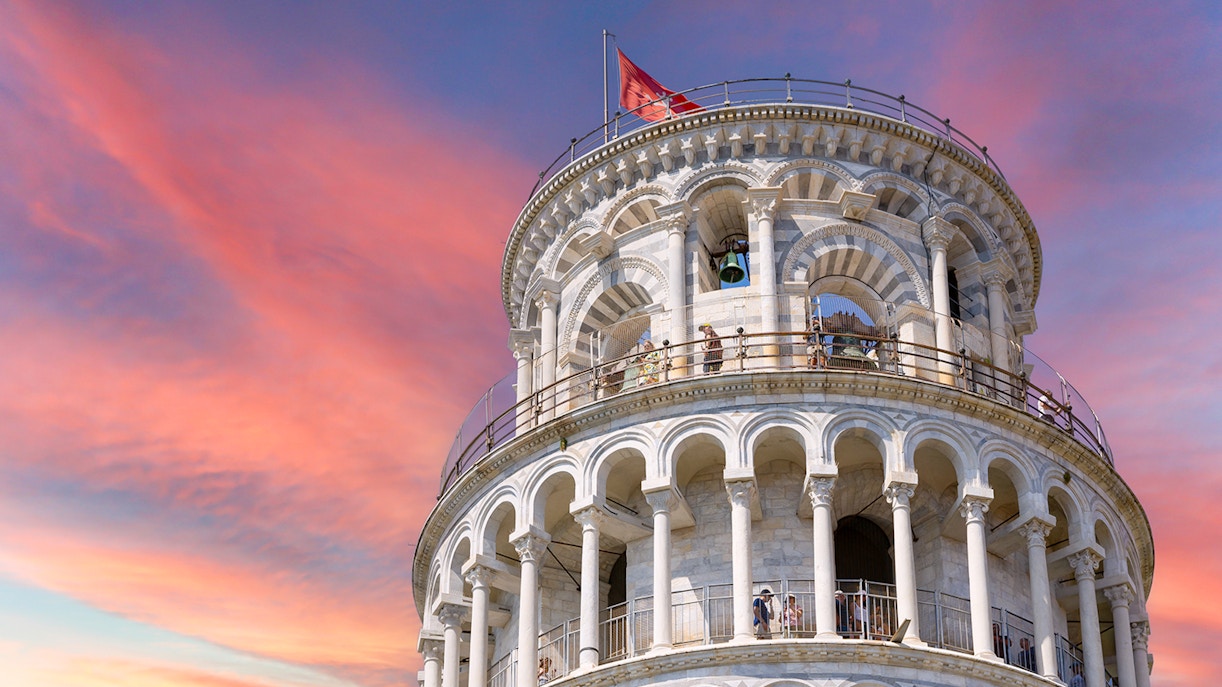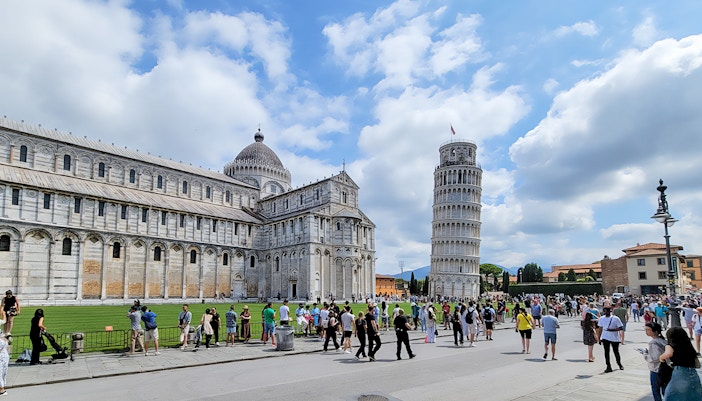To begin, the tower was temporarily closed to the public in 1990 and encircled with steel cables anchored to underground concrete ring beams, acting like a seatbelt to prevent sudden movement. Engineers installed tilt sensors, laser alignment systems, and inclinometers to monitor every millimeter of motion in real time.
Progression of the tilt
Construction
Construction of the Tower of Pisa began in 1173. Originally intended to be a freestanding bell tower, the first stones were laid on the 9th of August, 1173.
Start of the tilt
The soil in Pisa is soft alluvial soil, which comprises loose sand, clay and shells. After just 3 stories were built, the foundations began to sink into the ground, and the tower began to lean on its south side.
Resting period
When the builders observed that the tower began to lean in 1178, construction was stopped. As a result of the city of Pisa going to war against Genoa, construction of the tower was halted for 94 years, until 1272.
Reconstruction
After almost a 100 years, work on the Tower of Pisa resumed under the engineer Giovanni de Simone. After another 12 years of reconstruction, the tower had 7 floors. But again, a war broke out between Pisa and Genoa, and the construction of the tower stopped once again.
Finishing the tower
In 1350, the construction of the 8th floor of the Leaning Tower of Pisa began under the architect Tommaso Pisano and took over 20 more years to complete. In 1399, the Tower was finally finished, and 7 brass bells were installed at the top.
The tilt worsens
In 1838, architect Alessandro della Gerardesca decided to expose the beautifully carved base of the tower in order to increase its value. In 1934, Benito Mussolini decided to make the tower perfectly vertical with the help of his men. Both of these severely worsened the tilt of the Tower of Pisa.
Danger of toppling over
In 1990, the tower was declared to be in danger of collapse. Computer algorithms predicted that a tilt beyond 5.44 degrees would result in the tower toppling over, but the tower was still standing at an alarming 5.5 degrees. Following the collapse of a different tower in another part of Italy, the Tower of Pisa was closed for repairs.
Restoration attempts
In 2001, after more than 10 years of restoration work, the Tower lost approximately 40 centimeters of lean. The tower was brought back to the lean it had 200 years in the late 1700s to about 4 degrees.
